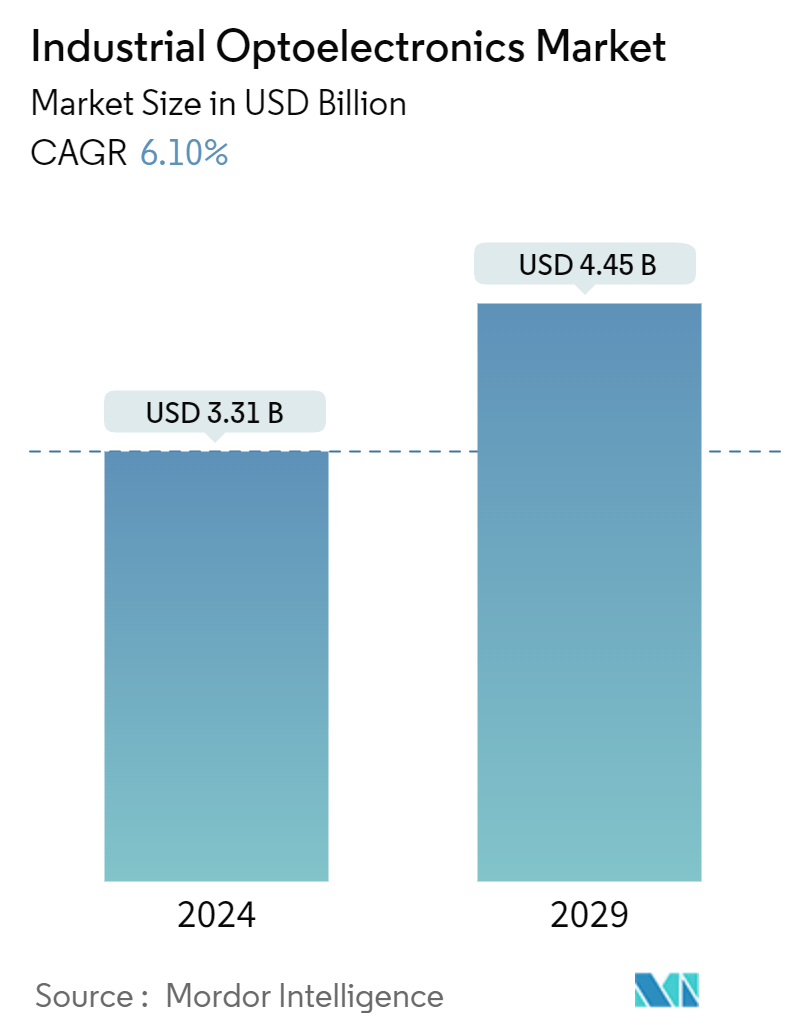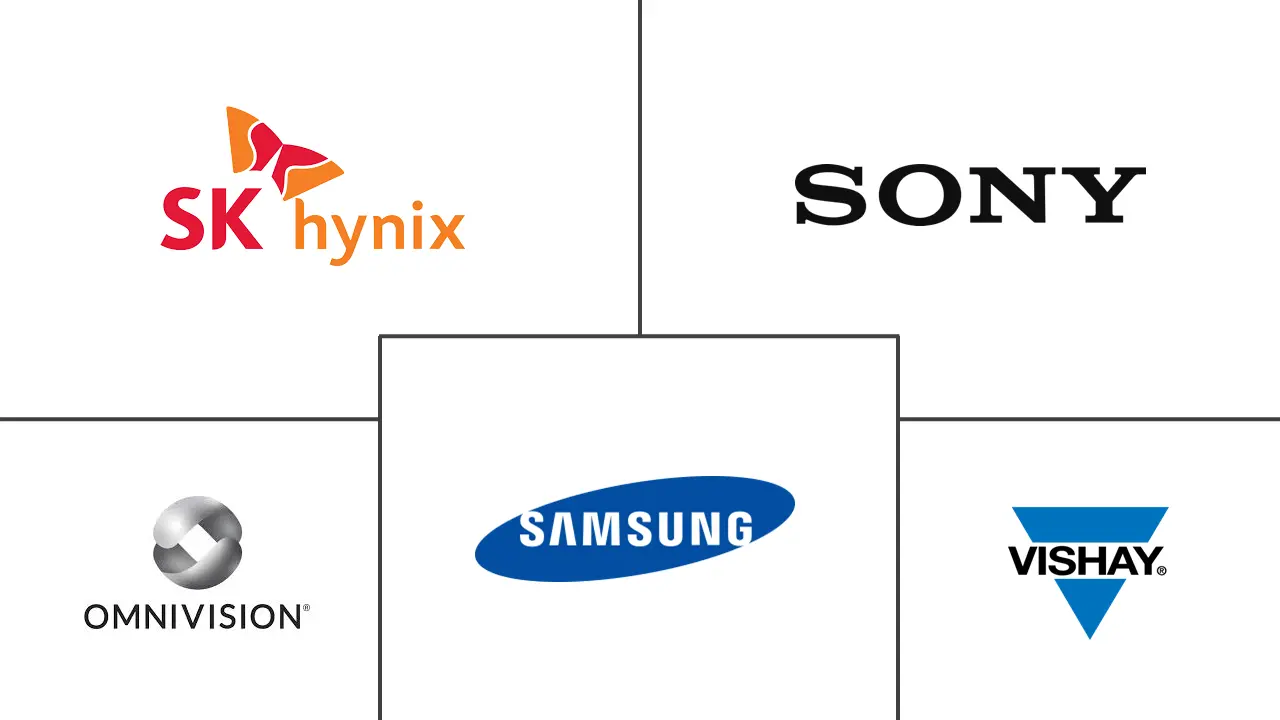Market Size of Industrial Optoelectronics Industry

| Study Period | 2019 - 2029 |
| Base Year For Estimation | 2023 |
| Market Size (2024) | USD 3.31 Billion |
| Market Size (2029) | USD 4.45 Billion |
| CAGR (2024 - 2029) | 6.10 % |
| Market Concentration | Low |
Major Players
*Disclaimer: Major Players sorted in no particular order |
Industrial Optoelectronics Market Analysis
The Industrial Optoelectronics Market size is estimated at USD 3.31 billion in 2024, and is expected to reach USD 4.45 billion by 2029, growing at a CAGR of 6.10% during the forecast period (2024-2029).
- Optoelectronics, a rapidly growing technology sector, involves the utilization of electronic devices to generate, detect, and manage light. LEDs have emerged as the de facto standard in electronic device display technology, driven by consumer preferences for enhanced performance and resolution. The industrial sector is witnessing a surge in the adoption of optoelectronic components, propelled by the increasing consumption of advanced manufacturing and fabrication technologies.
- LiDAR technology is widely adopted in industrial sector automation in applications such as AGVs, robot vacuums, and AVs and depends on laser diodes for accurate distance measurements and spatial recognition. To meet the need for improved performance, ROHM has developed patented technology that narrows the emission width of laser diodes, enhancing detection range and accuracy. In December 2023, ROHM introduced a 120 W laser diode to address the growing market demand for higher output. The RLD90QZW8 laser diode is designed for industrial and consumer applications, focusing on distance measurement and spatial recognition.
- The expansion of factory automation and the increasing implementation of smart factories have significantly driven the demand for automated production lines. These lines incorporate numerous robots, monitoring systems, and communication modules, each containing multiple processors and optocouplers, laser diodes that utilize optoelectronics devices. Robots, armed with image sensors, excel at tasks like component identification, precise dimension measurement, guiding machines or fellow robots in assembly, and executing pick-and-place operations.
- The growing demand for the installation of industrial robots fuels market growth. For instance, in 2023, the International Federation of Robotics reported a 12% increase in total industrial robot installations, with figures hitting 44,303 units. This surge was primarily driven by heightened automation investments by US manufacturers. Noteworthy installations in the US market included metal and machinery, which saw 4,123 units installed, marking a 6% increase, and the plastic and chemical sector, which installed 3,213 units, reflecting a 5% uptick.
- Supply chain disruptions restrict semiconductor devices' mass production. Further, the increasing inflation and interest rates have reduced consumer purchasing power, which is expected to reduce the demand for industrial robots and hamper market growth.
- Geopolitical conflicts, such as the invasion of Ukraine by Russia, have further disrupted the semiconductor supply chain. For example, the production of neon, a critical component for chip manufacturing, was affected when Ukraine’s leading neon suppliers halted operations. Trade disputes, export controls, and regulatory changes have disrupted the flow of raw materials and components, further exacerbating the optoelectronics shortage.

